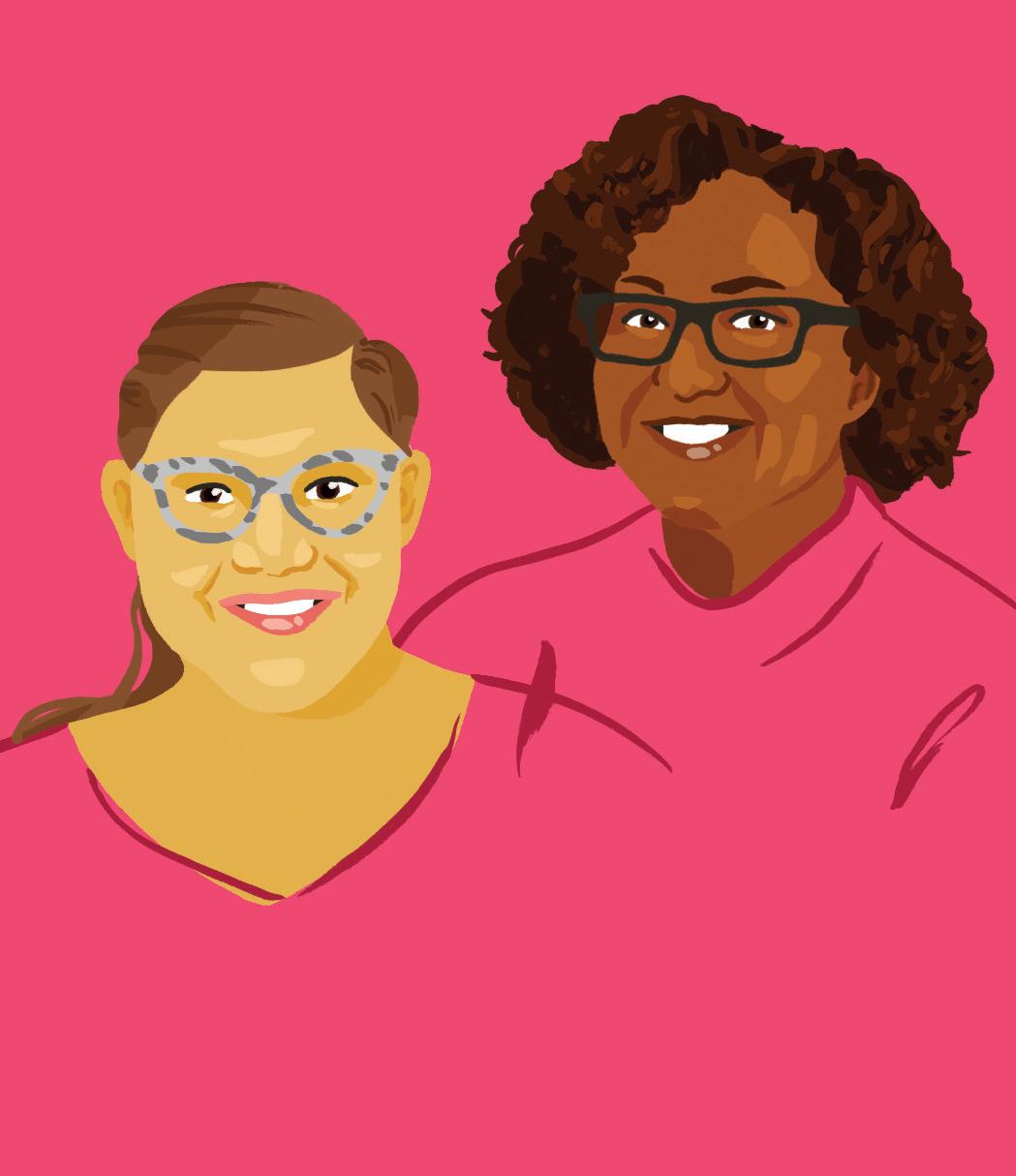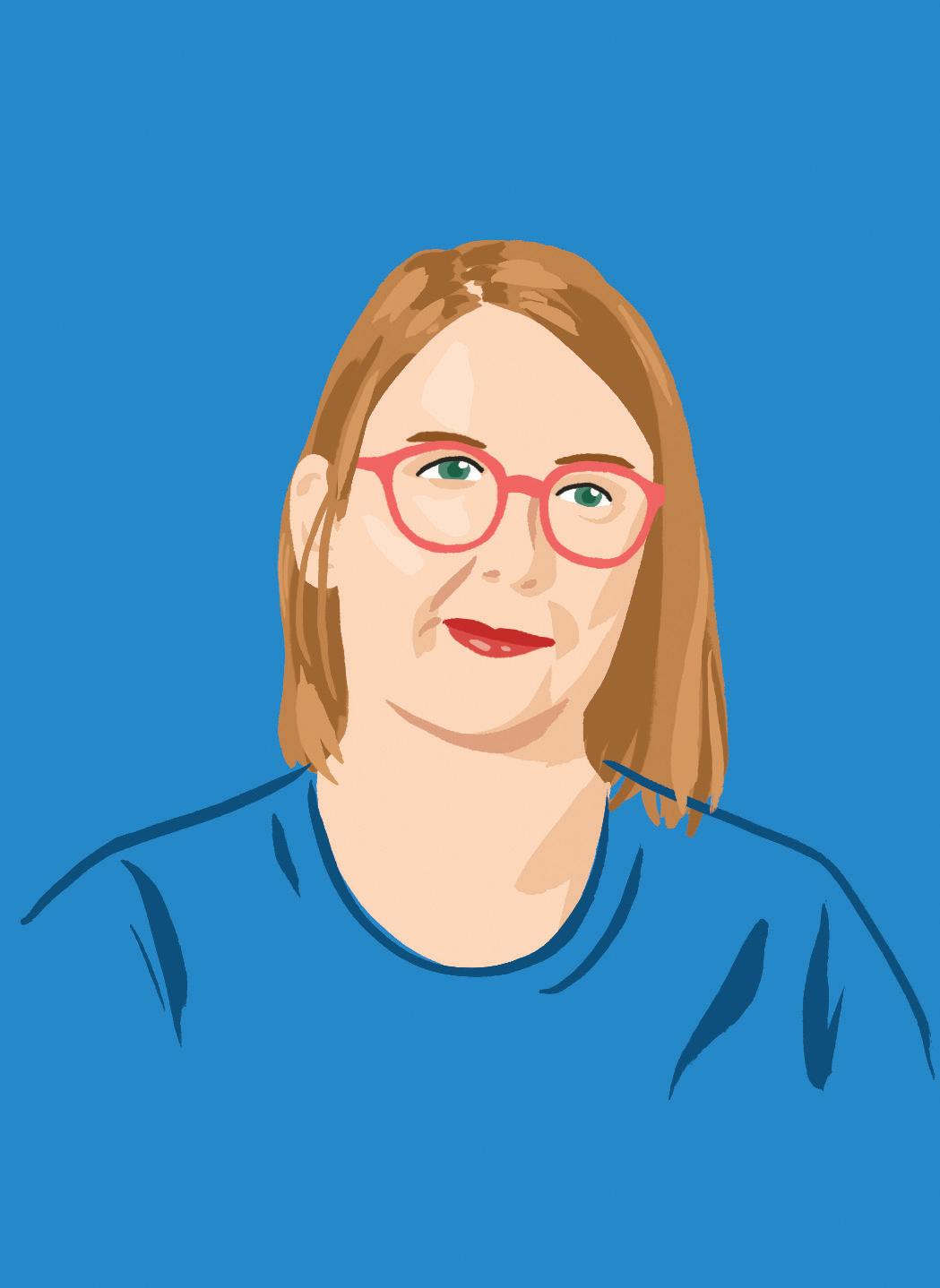well-being. But to achieve a culture of health, we as a society need to address the barriers so many face to health. This imperative includes focusing on advancing racial equity and removing barriers upheld by structural racism, and addressing ableism, sexism, discrimination based on sexual orientation, and classism, among other toxic legacies. And we need to be inclusive of people with disabilities. As the nation’s largest philanthropy dedicated to health, we at RWJF are on our own learning journey around disability inclusion, and we recognize that we have a long way to go. So, I am pleased to be in conversation with Ryan Easterly, executive director of the WITH Foundation and a fellow member of the Presidents’ Council on Disability Inclusion in Philanthropy.
Ryan Easterly and Richard E. Besser
The COVID-19 Effect The pandemic has demonstrated that disability inclusion in philanthropy is more crucial than ever. RICHARD E. BESSER IN CONVERSATION WITH RYAN EASTERLY
A
s president of the Robert Wood Johnson Foundation (RWJF), I have all too often observed that conversations about health equity ignore disability issues. We must shift the narrative about social justice to incorporate disability inclusion. COVID19 has helped to illuminate the many inequities facing people with disabilities. Throughout the pandemic, many people with disabilities have contended with gaps in access to care and services, and still struggle with vaccine access. When we talk about health equity, we need to work toward a more inclusive understanding of the life experiences of people with disabilities. Serving as cochair of the Presidents’ Council on Disability Inclusion in Philanthropy has expanded my thinking about health equity. RWJF focuses on working with others to build what we call a culture of health, providing everyone in America a fair and just opportunity for health and RICHARD E. BESSER is president and CEO of the Robert Wood Johnson Foundation. RYAN EASTERLY is executive director of the WITH Foundation.
Richard Besser: Ryan, you describe yourself as a gay Black man with disabilities who was a former foster kid in the South, and I know that’s not your complete identity. But it’s helpful in terms of thinking about intersectionality. When you think about the term intersectionality, what does it mean to you, and how have your personal experiences shaped how you see intersectionality and the importance of racial equity and disability inclusion in the work that you do? Ryan Easterly: Intersectionality acknowledges that individuals have multiple identities and experiences that affect how they navigate society and the forms of oppression and discrimination they may face. As someone who’s gay, Black, has disabilities both apparent and nonapparent, and who grew up in the South and spent some time in the foster care system, I’m very aware that many of the programs and policies I benefited from were not necessarily designed with my unique needs in mind. In my work in philanthropy, it helps me to always look around the table to see who is making the decisions, looking especially for those who are most marginalized, by which I am primarily referring to people of color, Black people, and women. It was only by others intentionally addressing my needs and experiences that I was able to survive and thrive. In my work, I try to do the same. Through WITH Foundation funding we promote health care that meets the unique needs of the I/DD [intellectual and developmental disabilities] community. Philanthropy often focuses on race, gender, and other dimensions of identity when addressing equity, but disability is not often addressed. I think there’s an opportunity for philanthropy to do that. It will enable philanthropy to preserve and protect the rights of people with disabilities, who represent one in every four Americans and more than one billion people worldwide. It’s an opportunity for philanthropy to ensure that everyone can achieve equity. CENTERING DISABILITY
• WINTER 2022
9
.......... .......... .......... .......... .......... .......... .......... .......... .......... .......... .......... .......... .......... .......... .......... .......... .......... .......... .......... .......... .......... .......... .......... .......... .......... .......... .......... .......... .......... .......... .......... .......... .......... .......... .......... .......... .......... .......... .......... .......... .......... .......... .......... .......... .......... .......... .......... .......... .......... .......... .......... .......... .......... .......... .......... .......... .......... .......... .......... .......... .......... .......... .......... .......... .......... .......... .......... .......... .......... .......... .......... .......... .......... .......... .......... .......... .......... .......... .......... .......... .......... .......... .......... .......... .......... .......... .......... .......... .......... .......... .......... .......... .......... .......... .......... .......... .......... .......... .......... .......... .......... .......... .......... .......... .......... .......... .......... .......... .......... .......... .......... .......... .......... .......... .......... .......... .......... .......... .......... .......... .......... .......... .......... .......... .......... .......... .......... .......... .......... .......... .......... .......... .......... .......... .......... .......... .......... .......... .......... .......... .......... .......... .......... .......... .......... .......... .......... .......... .......... .......... .......... .......... .......... .......... .......... .......... .......... .......... .......... .......... .......... .......... .......... .......... .......... .......... .......... .......... .......... .......... .......... .......... .......... .......... .......... .......... .......... .......... .......... .......... .......... .......... .......... .......... .......... .......... .......... .......... .......... .......... .......... .......... .......... .......... .......... .......... .......... .......... .......... .......... .......... .......... .......... .......... .......... .......... .......... .......... .......... .......... .......... .......... .......... .......... .......... .......... .......... .......... .......... .......... .......... .......... .......... .......... .......... .......... .......... .......... .......... .......... .......... .......... .......... .......... .......... .......... .......... .......... .......... .......... .......... .......... .......... .......... .......... .......... .......... .......... .......... .......... .......... .......... .......... .......... .......... .......... .......... .......... .......... .......... ..........






